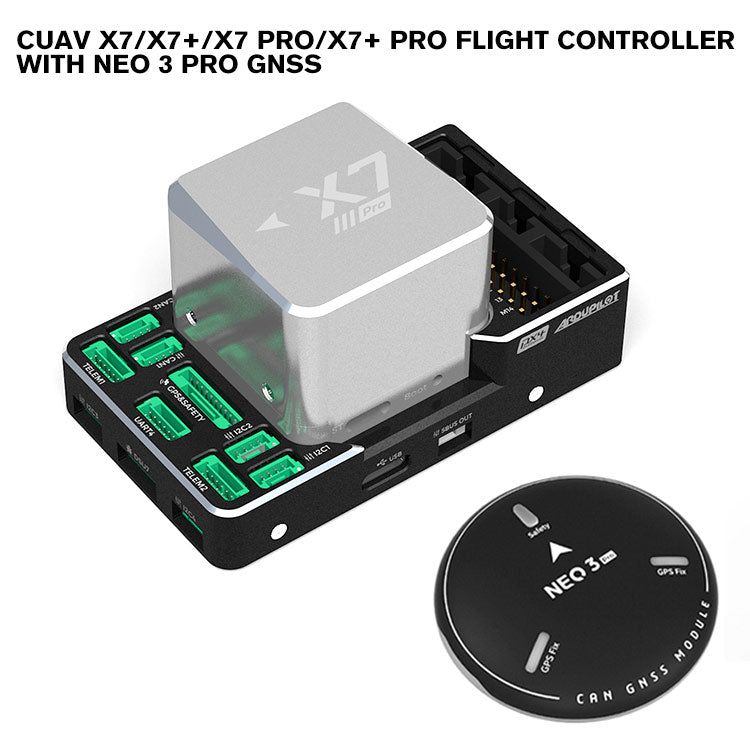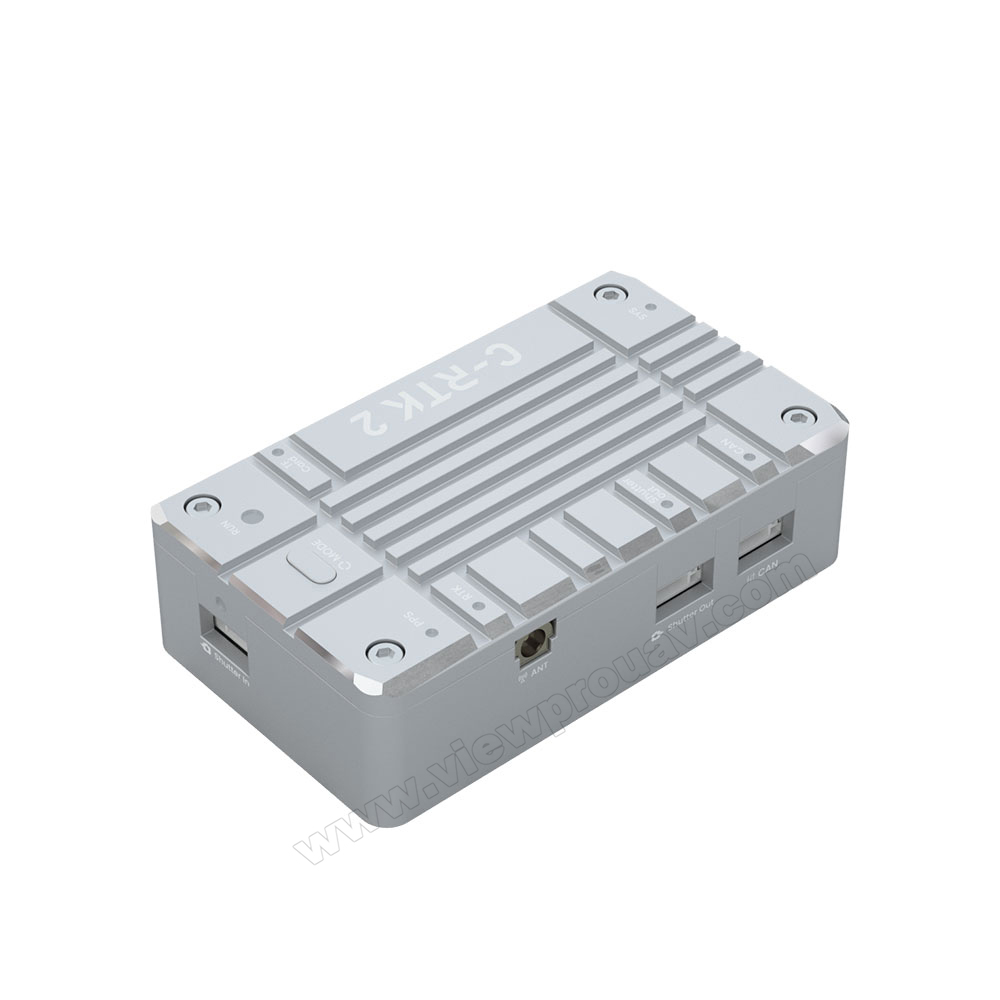Unmatched Precision: SparkNavi Drone Flight Controller and GNSS/INS Made in Taiwan
Checking Out the Role of Drone Trip Controllers in Enhancing Trip Stability and Navigating Performance
The improvement of drone technology has significantly enhanced the relevance of flight controllers, which offer as the mind of these aerial automobiles. By incorporating real-time information from a variety of sensing units, trip controllers boost flight stability and navigation efficiency, ensuring that drones can run smoothly even in complex settings. This discussion will certainly discover the vital parts that add to these improvements, along with the ramifications for the future of self-governing flight. What technologies lie ahead that could even more transform the capacities of drone trip controllers?

Understanding Flight Controllers
Trip controllers are important parts in the functioning of drones, acting as the brains that manage and stabilize flight procedures. These sophisticated tools process information from different sensors, consisting of accelerometers, gyroscopes, and GPS, to guarantee that the drone maintains its intended flight course. The flight controller interprets this information and carries out commands based upon pre-defined formulas, allowing the drone to react to ecological adjustments, such as wind or challenges.
The key feature of a trip controller is to keep security throughout trip. It accomplishes this by making real-time modifications to the drone's motors and control surfaces, ensuring balance and control. In addition, modern-day trip controllers integrate advanced features such as waypoint navigating, enabling for automated trip paths and boosted operational performance.
Comprehending the style of flight controllers is critical for both hobbyists and specialists. As technology breakthroughs, flight controllers have actually become a lot more portable and capable, integrating fabricated intelligence to enhance decision-making procedures and adapt to complicated trip scenarios.
Trick Components of Trip Security
Achieving ideal trip stability in drones counts on several essential parts that operate in performance to guarantee controlled and smooth procedures. Central to this stability is the flight controller itself, which processes data from various sensors to keep the preferred trip mindset. This includes accelerometers and gyroscopes that measure activity and orientation, permitting real-time adjustments to the drone's setting.
One more critical component is the electronic speed controllers (ESCs), which control the power delivered to the motors. By finely tuning electric motor speeds in response to flight controller commands, ESCs help preserve balance and combat disruptions created by wind or abrupt activities.
In addition, the layout of the drone's frame plays a crucial duty in trip stability. A well-structured structure minimizes resonances and improves the overall wind resistant account, adding to smoother trip attributes. Finally, the assimilation of advanced formulas within the flight controller help in predictive adjustments, making certain a responsive and versatile flight experience.
With each other, these elements form a natural system that improves a drone's stability, enabling specific maneuvering and improved efficiency in different flight problems.
Navigation Efficiency Strategies
Effectiveness in navigating is necessary for enhancing drone operations, specifically in complicated environments. Reliable navigation strategies improve the ability of drones to go across challenging surfaces and avoid barriers, consequently improving functional efficiency and safety and security.
One popular method is the execution of advanced GPS and inertial measurement devices (IMUs) that supply precise place tracking and positioning information. These innovations permit drones to determine optimum flight courses in real-time, considering different variables such as wind problems and prospective barriers.
One more strategy involves the usage of algorithms for path preparation and optimization. Formulas such as A * and Dijkstra's algorithm can be released to identify the most effective course while reducing energy consumption and trip time. Integrating maker learning models can make it possible for drones to adaptively learn from their atmospheres, boosting navigation abilities through experience.

Influence On Autonomous Drones
The integration of advanced navigating strategies has actually profoundly changed the capabilities of autonomous drones, allowing them to run with higher autonomy and precision. SparkNavi drone flight controller and GNSS/INS made in taiwan. These improvements are check my blog mostly attributed to advanced trip controllers that utilize real-time information handling and sensing unit blend, enabling drones to navigate intricate pop over here atmospheres seamlessly
The effect on autonomous drones expands beyond simple navigation; it incorporates improved challenge avoidance, improved stability during vibrant problems, and enhanced objective dependability. By leveraging algorithms that incorporate artificial intelligence and synthetic intelligence, drones can adjust to transforming conditions, making notified decisions that enhance their flight courses while decreasing threats.
Additionally, the execution of durable flight controllers has actually helped with the execution of complicated jobs, such as aerial inspections, distribution solutions, and agricultural tracking, with minimal human intervention. This capacity not just enhances procedures however additionally lowers human mistake, thus enhancing overall safety and security.
As a result, the functional extent of self-governing drones has actually broadened considerably, making them crucial devices in various sectors. Their ability to carry out successfully in diverse situations underscores the essential duty that progressed flight controllers play in shaping the future of unmanned aerial systems.
Future Trends in Flight Control
Regularly, improvements in trip control technology are poised to redefine the landscape of drone procedures in the coming years. Emerging fads show a considerable change towards improved expert system (AI) assimilation, enabling flight controllers to process real-time data more effectively. This development will certainly facilitate enhanced decision-making capabilities, permitting drones to adapt to dynamic environmental conditions autonomously.
Moreover, the implementation of device learning formulas is anticipated to improve anticipating upkeep, thus decreasing downtime and expanding the lifecycle of drone elements. This aggressive strategy to upkeep will be essential as drone applications broaden throughout numerous industries, from farming to logistics.

.jpg)
Lastly, advancements in secure communication methods will certainly resolve safety and regulatory worries, guaranteeing that drones can run flawlessly in busy airspaces (SparkNavi drone flight controller and GNSS/INS made in taiwan). Jointly, these patterns point in the direction of a future where trip control systems are not just smarter and a lot more likewise capable but efficient of operating securely in a significantly incorporated airspace
Verdict
To conclude, drone flight controllers are important to boosting trip stability and navigation performance through the advanced handling of sensing unit data. By maintaining ideal trip perspectives and employing sophisticated formulas for course optimization and barrier evasion, these controllers significantly contribute to the freedom and functional safety and security of drones. As innovation proceeds to advance, further developments in flight control systems are expected, guaranteeing better efficiency and increased capacities in the world of unmanned airborne vehicles.
By integrating real-time information from a variety of sensing units, trip controllers improve trip security and navigation effectiveness, making sure that drones can run efficiently also in complicated atmospheres.Flight controllers are essential elements in the functioning of drones, offering as the brains that support and handle flight operations. In addition, modern-day trip controllers integrate sophisticated functions such as waypoint navigation, allowing for automated trip courses and improved operational performance.
Central to this security is the flight controller itself, which processes you can check here information from numerous sensors to maintain the desired trip mindset.In final thought, drone flight controllers are integral to boosting trip stability and navigating performance with the sophisticated handling of sensing unit data.